
国际经济学(双语)
¥ 41.64 九五品
仅1件
河北廊坊
认证卖家担保交易快速发货售后保障
作者黄敏 主编
出版社复旦大学出版社
出版时间2011-05
版次1
装帧平装
货号A15
上书时间2024-10-31
- 在售商品 暂无
- 平均发货时间 12小时
- 好评率 暂无
- 最新上架
商品详情
- 品相描述:九五品
图书标准信息
- 作者 黄敏 主编
- 出版社 复旦大学出版社
- 出版时间 2011-05
- 版次 1
- ISBN 9787309080544
- 定价 29.00元
- 装帧 平装
- 开本 16开
- 纸张 胶版纸
- 页数 271页
- 字数 294千字
- 【内容简介】
-
本书是一本长期从事国际经济学双语教学的教师,按照目前我国经济学领域双语教学的实际情况编写的内容精炼、言语通俗、理论与实践相结合的教材。
本书分为十一章,包括古典贸易理论、新古典贸易理论、现代贸易理论、关税与非关税壁垒、区域贸易安排、国际收支与汇率、汇率决定理论、国际收支调节、开放经济中的宏观经济政策、宏观经济政策的国际传导与协调、国际要素流动与跨国公司。本书在编写过程中充分考虑易用性,在每章篇首列出本章将出现的专业词汇,并给出中文释义,方便读者学习;在一些逻辑性较强、内容较难的章节,给出逻辑推演图或说明,帮助读者理解。
本书适合高校财经类专业师生作为教材使用,也可作为实务工作者的参考读物。 - 【目录】
-
Chapter 1 Classical Theories of International Trade
1.1 Mercantilism
1.2 Trade Based on Absolute Advantage: Adam Smith
1.3 Trade Based on Comparative Advantage: David Ricardo
1.3.1 An Example of Comparative Advantage
1.3.2 Gains from Specialization and Trade with ComparativeAdvantage
1.3.3 Comparative Advantage in Money Terms
1.4 Comparative Advantage and Opportunity Cost
1.4.1 Gains from Specialization and Trade with OpportunityCosts
1.4.2 Production Possibilities Frontier and Constant OpportunityCosts
1.4.3 Trade under Increasing Opportunity Costs
1.5 Comparative Advantage with More Than Two Commodities andCountries
1.5.1 Comparative Advantage with More Than Two Commodities
1.5.2 Comparative Advantage with More Than Two Countries
1.6 Theory of Reciprocal Demand
1.7 Offer Curve and Terms of Trade
1.7.1 Offer Curve
1.7.2 Equilibrium Terms of Trade
1.7.3 Other Concepts of the Terms of Trade
Chapter 2 New Classical Theories of International Trade
2.1 Specific Factor Model
2.2 Factor Endowment Theory (H-O Model)
2.3 Other New Classical Theories
2.3.1 Rybczynski Theorem
2.3.2 Factor Price Equalization Theory
2.3.3 Stolper-Samuelson Theorem
2.3.4 Explaining Wage Inequality
2.4 Leontief Paradox
Chapter 3 Modern Trade Theories
3.1 Existence of Intraindustry Trade
3.2 Technological Gap, Product Life Cycle and InternationalTrade
3.2.1 Technological Gap Theory
3.2.2 Product Life Cycle Theory
3.3 Theory of Overlapping Demands
3.4 Economies of Scale, Imperfect Competition, and InternationalTrade
3.4.1 Economies of Scale and International Trade
3.4.2 Monopolistic Competition and Trade
3.5 Reciprocal Dumping Model
3.5.1 Economics of Dumping
3.5.2 Reciprocal Dumping
Chapter 4 Tariffs and Nontariff Barriers
4.1 Theories for Trade Protection
4.1.1 Infant Industry Argument
4.1.2 Terms of Trade Argument
4.1.3 Domestic Market Failure Argument
4.1.4 Strategic Trade Policy
4.2 Tariffs
4.2.1 Types of Tariffs
4.2.2 Effective Rate of Protection
4.2.3 Tariff Welfare Effects
4.3 Nontariff Trade Barriers
4.3.1 An Introduction to Nontariff Trade Barriers
4.3.2 Effects of Import Quota
4.3.3 Effects of Export Subsidy
Chapter 5 Regional Trading Arrangements
5.1 Types of Regional Trading Arrangements
5.2 Effects of Customs Union
5.2. l Static Effects
5.2.2 Dynamic Effects
5.3 Practice of Regional Integration
5.3.1 European Union
5.3.2 North American Free Trade Agreement
5.3.3 Association of Southeast Asian Nations
Chapter 6 Balance of Payments and Foreign Exchange
6.1 Balance of Payments
6.1.1 Current Account
6. l. 2 Capital and Financial Account
6.1.3 Automatic Adjustment of the Balance of Payments
6.2 Foreign Exchange Market and Exchange Rates
6.2.1 Foreign Exchange Market
6.2.2 Exchange Rate
6.2.3 Determinants of Exchange Rates
6.3 Exchange Rate System
Chapter 7 Theories of Exchange Rate Determination
7.1 Theory of Purchasing Power Parity
7.1.1 Alsolute Purchasing Power Parity
7.1.2 Relative Purchasing Power Parity
7.2 Theory of Interest Rate Parity
7.2.1 Covered Interest Rate Parity
7.2.2 Uncovered Interest Rate Parity
7.3 Balance of Payments Approach to Exchange Rates
7.4 Asset Market Approach to Exchange Rates
7.4.1 Flexible-Price Monetary Approach
7.4.2 Sticky-Price Monetary Approach
7.4. 3 Portfolio Approach to Exchange Rates
Chapter 8 Balance of Payments Adjustments
8.1 Elasticities Approach to the Balance of Payments
8.2 Multiplier Approach to the Balance of Payments
8.3 Absorption Approach to the Balance of Payments
8.4 Monetary Approach to the Balance of Payments
8.4.1 A Change in Domestic Credit under Fixed Exchange Rates
8.4.2 A Change in the Quantity of Money Demanded under FixedExchange Rates
8.4.3 A Change in Domestic Credit under Floating ExchangeRates
8.4.4 A Change in the Quantity of Money Demanded under FloatingExchange Rates
Chapter 9 Macroeconomic Policie in Open Economy
9.1 Internal Balance and External Balance in Open Economy
9.1.1 Internal Balance and External Balance
9.1.2 Policy Instruments
9.1.3 Tinbergen Rule
9.1.4 Meade Conflict
9.2 Policy Mix to Achieve Both Internal Balance and ExternalBalance
9.2.1 Mundeli Assignment Rule
9.2.2 Swan Model
9.3 Effects of Macroeconomic Policies under Fixed ExchangeRates
9.3.1 IS-LM-BP Model
9.3.2 Effects of Fiscal Policy under Fixed Exchange Rates
9.3.3 Effects of Monetary Policy under Fixed Exchange Rates
9.4 Effects of Macroeconomic Policies under Floating ExchangeRates
9.4.1 Effects of Fiscal Policy under Floating Exchange Rates
9.4.2 Effects of Monetary Policy under Floating ExchangeRates
9.4.3 Mundell Incompatible Trinity
Chapter 10 International Transmission and Coordination ofMacroeconomic Policies
10.1 International Transmission of Macroeconomic Policies underFixed Exchange Rates
10. 1. 1 Two-Nation Mundell-Fleming Model
10.1.2 International Transmission of Fiscal Policy under FixedExchange Rates
10.1.3 International Transmission of Monetary Policy under FixedExchange Rates
10.2 International Transmission of Macroeconomic Policies underFloating Exchange Rates
10.2.1 International Transmission of Fiscal Policy under FloatingExchange Rates
10.2.2 International Transmission of Monetary Policy underFloating Exchange Rates
10.3 International Transmission of Inflation
10.3.1 Price Adjustment Mechanism of Inflation Transmission
10.3.2 Balance of Payments Mechanism of InflationTransmission
10.3.3 Interest Rate Transmission Mechanism
10.4 International Policy Coordination and MonetaryCooperation
10.4.1 International Coordination of Macroeconomic Policies
10.4.2 International Monetary Cooperation
Chapter 11 International Factor Movements and MultinationalEnterprises
11.1 International Movement of Labor
11.1.1 Motives for International Labor Movement
11.1.2 Economic Effects of Labor Movement
11.1.3 Other Welfare Effects of International Labor Movement
11.2 International Movement of Capital
11.2.1 Data on International Movement of Capital
11.2.2 Motives for International Capital Movement
11.2.3 Economic Effects of Capital Movement
11.3 Multinational Enterprises and Foreign Direct InvestmentTheories
11.3.1 Multinational Enterprises
11.3.2 Foreign Direct Investment Theories
点击展开
点击收起
相关推荐
— 没有更多了 —


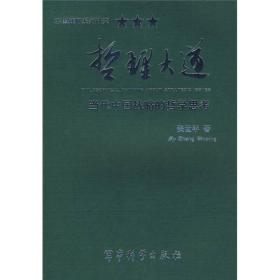
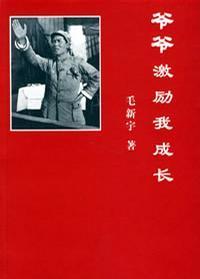
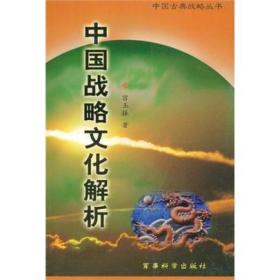

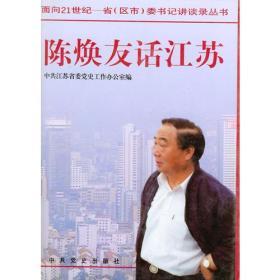
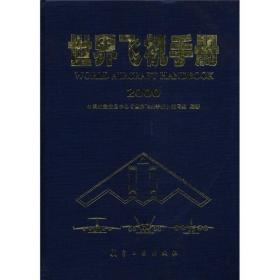





以下为对购买帮助不大的评价